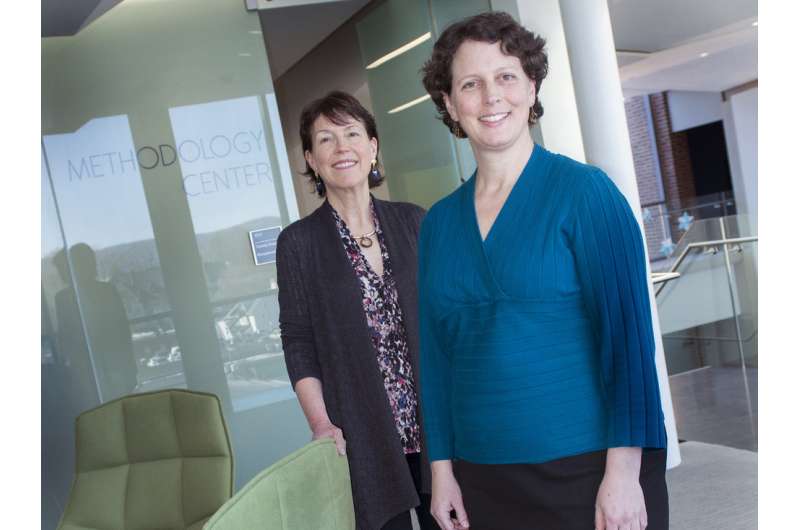Gleaning meaning in studies of human health and behavior

Two teenagers try cigarettes at a party. A few years later, one has become a pack-a-day smoker. The other smokes now and then. Why is one addicted to nicotine, while the other can take it or leave it?
These types of questions can be almost impossible to answer given the many factors—age, diet, stress level, family history, socioeconomic level, and so on—that influence human health and conduct.
"If you're studying plants, you can set up the experiment so the plants are all the same except for the one variable you want to study," says Linda Collins, director of the Methodology Center in the College of Health and Human Development at Penn State. "Plants also won't get up and walk away, or refuse to participate in the study. But humans are complex creatures; they're difficult to study."
Collins and her colleagues in the Methodology Center invent new ways to design experiments and analyze complex data, often adapting existing statistical methods and applying them, for the first time, to thorny problems in behavioral and medical science. Their work enables scientists at Penn State and around the world to answer questions that could not have been answered before.
Finding what works
Center researchers expanded the use of a technique called latent class analysis to study links between teen alcohol use and sexual activity. The technique, which allows investigators to identify potentially significant subgroups within a population of interest that are not immediately obvious, helped them pinpoint what drinking behaviors are more likely to lead to risky sexual behavior by teens. Now, Center researchers are pioneering methods to create an online intervention to prevent those behaviors in college students. Their ultimate goal is to curb the spread of sexually-transmitted infections.
"First, we want to determine the effectiveness of the various components of the intervention," says Collins, who is leading the effort. One component is a lesson on how to stay safe while having a good time. Another describes the behavior of participants' peers regarding alcohol use and unprotected sex.
Collins and her colleagues assign all possible combinations of the components to different study participants. They then survey participants before, during, and after the assigned intervention to see which components have the best outcomes regarding alcohol use and sexual activity. The researchers will then revise or eliminate the components that are less effective, and repeat the experiment, eventually zeroing in on the best combination. "After it's tested and we have a final product, the intervention could potentially be implemented widely in universities across the nation," says Collins.
Sharing their skills
The Center offers resources for scientists through its website, including instructional videos and software programs that are available as free downloads, and provides training in the form of courses, seminars, and workshops for faculty and graduate students at Penn State and elsewhere.
"Our students learn to speak the languages of statistics, behavioral science, developmental research, and prevention simultaneously," says Collins. "Being able to walk in all those worlds is really valuable. When they graduate they're at a big advantage for jobs."
The Center's work is especially valuable for medical and social scientists trying to bridge the gap between research and practical application. For example, half of those addicted to opiate analgesics—morphine, methadone, and oxycodone—relapse within three months of being released from a drug rehabilitation center. The sooner those individuals can be identified, the sooner their treatment can be adjusted to make relapse less likely. Is it possible to predict who will relapse and who won't, as early as their first days in rehab? Roger Meyer, professor of psychiatry at Penn State Hershey Medical Center, thinks it is.
"Our hope is that by examining changes in patient mood, stress, craving for drug, and sleep we will be able to predict with 90 percent accuracy which patients are likely to relapse, so we can do a better job of helping treatment facilities help patients," he says.
Meyer is working with Stephanie Lanza, scientific director of the Methodology Center, to gather the complex data needed to reveal who is most likely to relapse. They are using a time-varying effect model, which Lanza created with Center investigator Runze Li, to examine differences in relapse rate associated with a variety of factors that shift over time. Ultimately, the team hopes to provide rehabilitation centers with tools that will enable them to better assist their patients.
This project would not be possible without the Center's unique expertise, says Meyer. "What Stephanie and the other researchers in the Methodology Center can do statistically is on the cutting edge. They provide tremendous value to other researchers and are a critical bridge to translational research in clinical medicine."

















